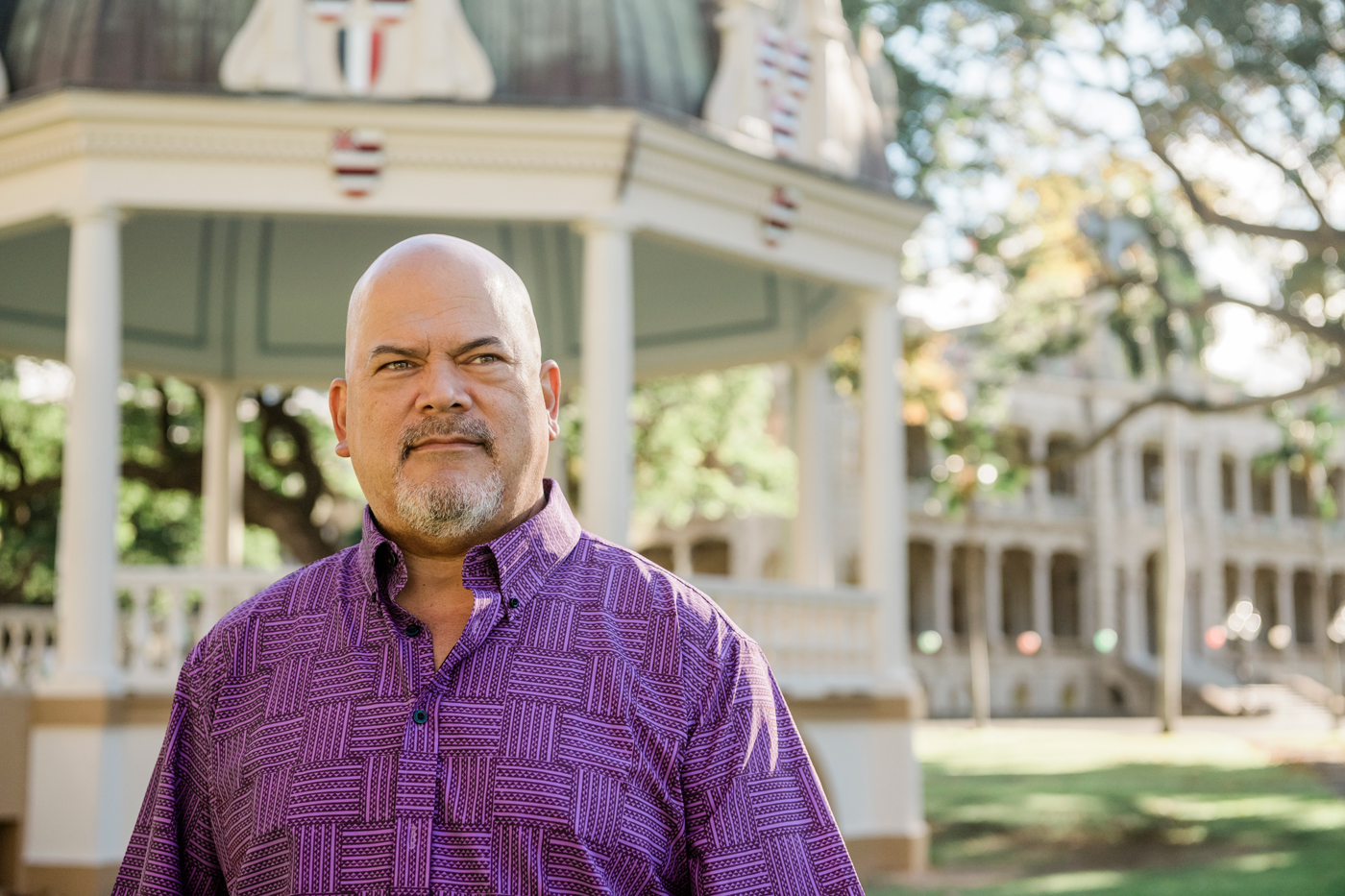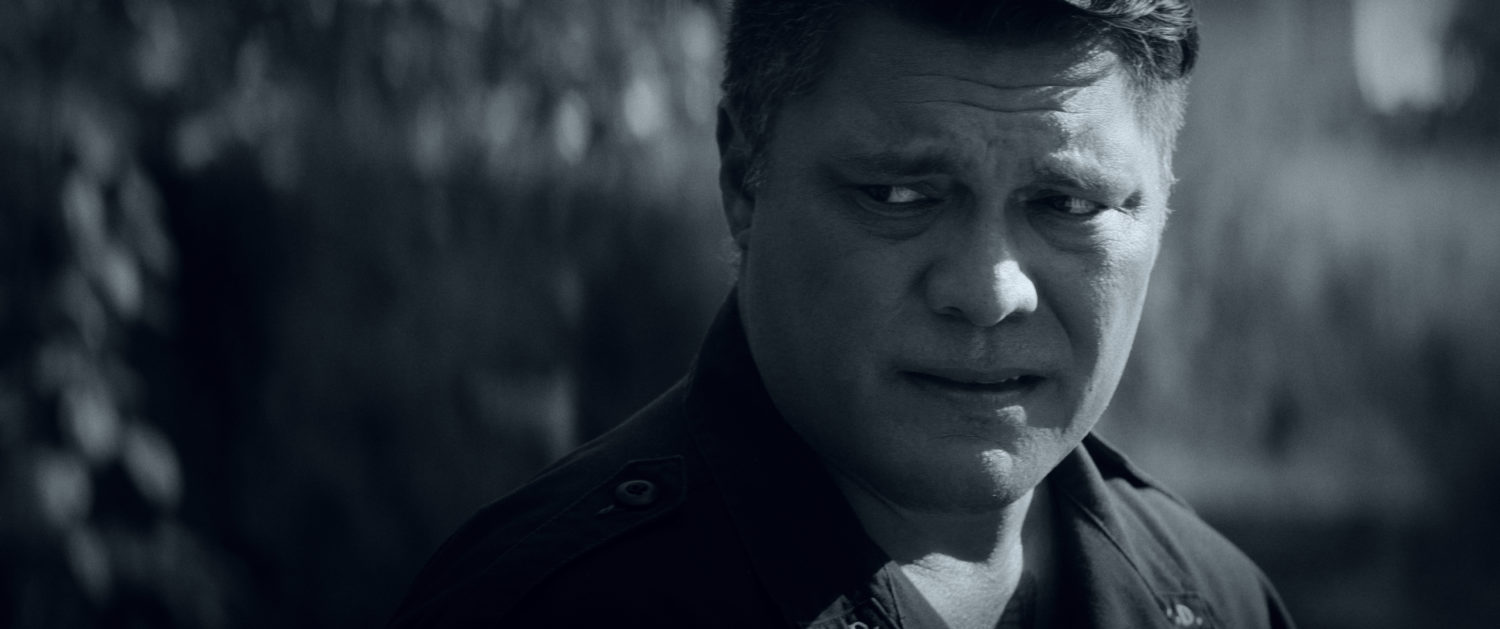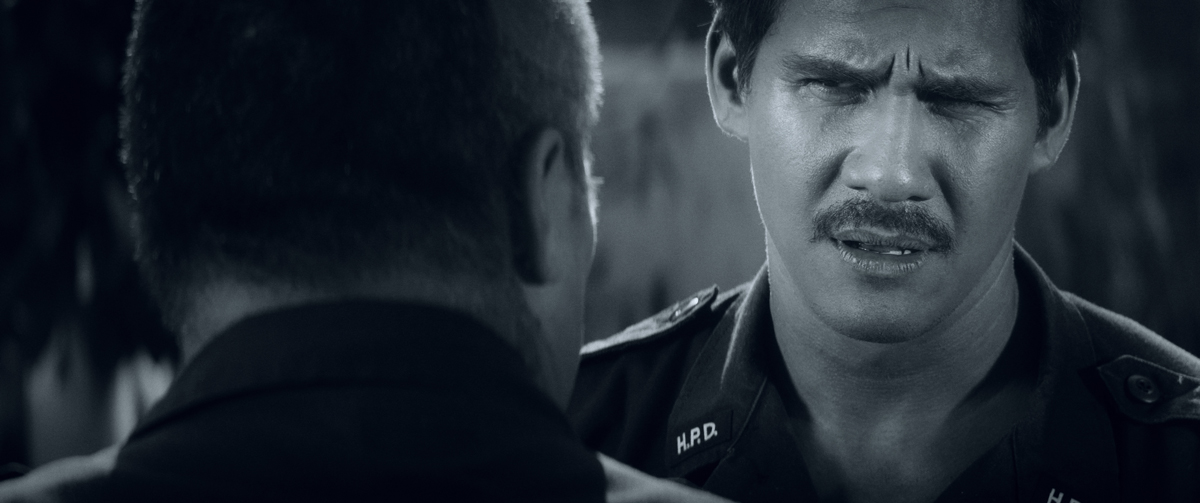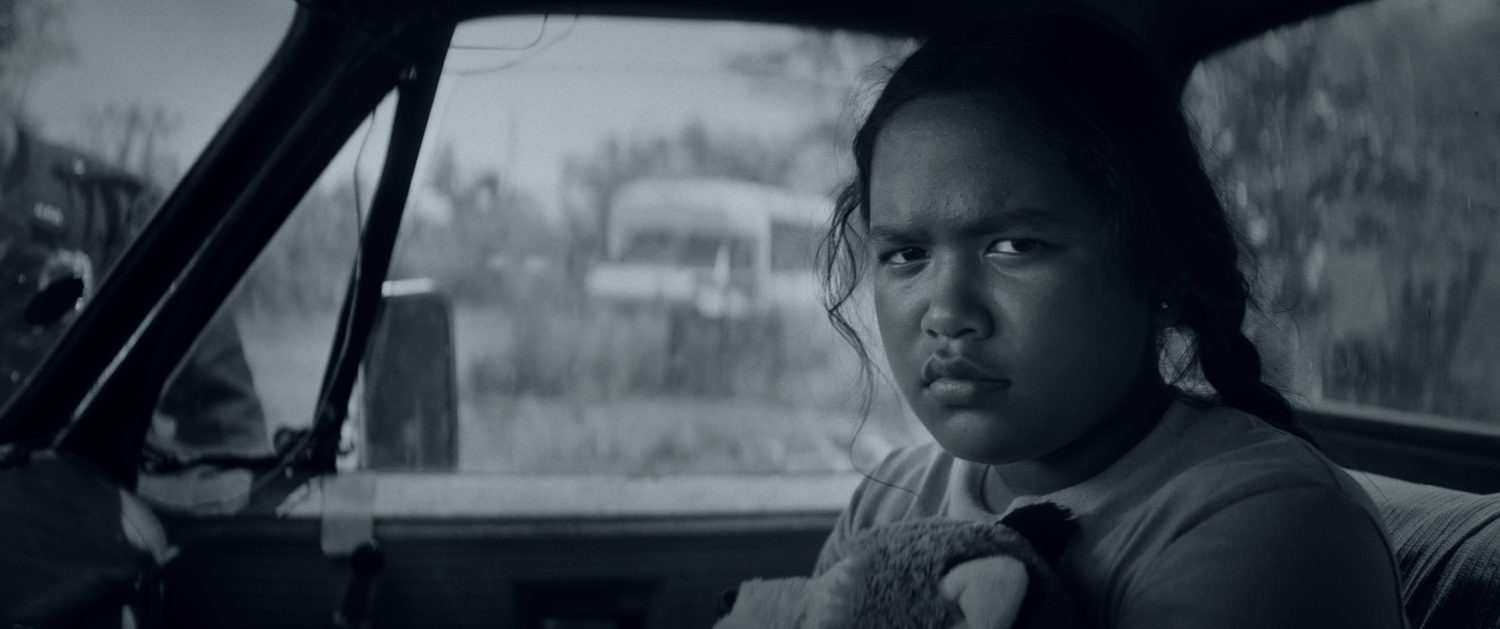In Scott W. Kekama Amona’s award-winning short film, the story of a Kanaka Maoli police officer torn between his profession and principles proved to be a people’s favorite.
The 2022 Hawaiʻi International Film Festival nominated E Mālama Pono, Willy Boy directed by Scott W. Kekama Amona for a Best Short Award. I saw almost all the local short films that were selected for HIFF, and in my estimation, Amona’s film was the most memorable, arguably the most accomplished work, in a crowded line-up of impressive short films made in Hawaiʻi. Most impressive was the film’s high production values, especially its cinematography, directing, editing, acting, and writing (the short is co-written with Nani Rían Kenna Ross). Theatergoers agreed with their post-screening votes, awarding Amona with the Best Short Film Audience Award.
Although this is Amona’s debut film, its artistic merits has propelled him to the forefront of emerging Hawaiian filmmakers as a talent who has something to say and is unafraid to say it. A late-comer to filmmaking, Amona, 60, has created a film with depth, nuance, and complexity. As such, it’s an ideal film to spark off thoughtful conversations on what it means to be homeless in Hawai‘i, especially for Native Hawaiians in their own homeland, and how Native Hawaiian police officers sent in by the State to confront such issues deal with their own emotions and behaviors when it is their own people they’re evicting.
Amona’s film grapples with these dilemmas in a way that is riveting, assured, and compelling. His protagonist, William Kupihea, played by actor Ioane Goodhue, takes a stance that we know will change his life and that of his family forever. We admire him, even though we suspect that if we were ever in his situation, we may not have his courage or conviction, and could be found wanting.
On November 16, 2022, I spoke with Amona about his film E Mālama Pono, Willy Boy.
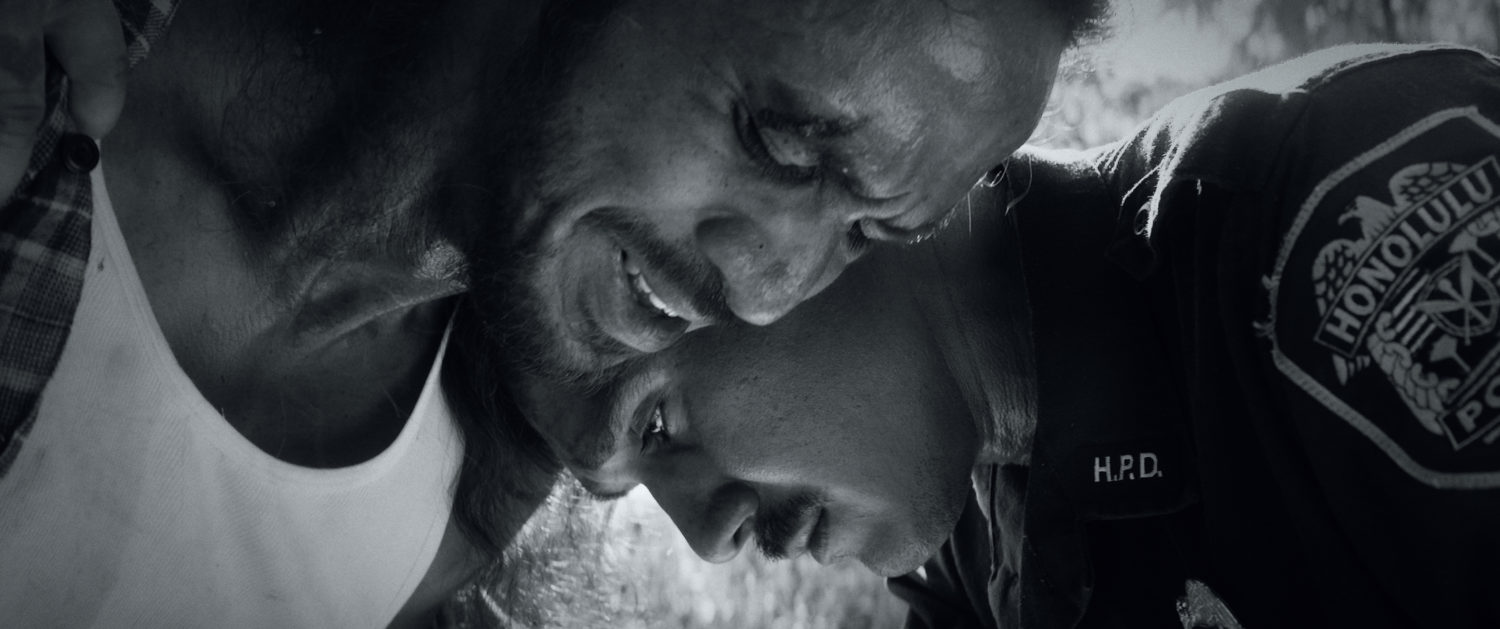
VILSONI HERENIKO We first met at ACM, the Academy for Creative Media at the University of Hawai‘i at Mānoa, when you were in my class on Indigenous Aesthetics in 2016. You were in your fifties then, and the oldest. I remember thinking how brave you were to be in that class.
KEKAMA AMONA Yes, I was the oldest. I’d go to class, and there were these 18, 19, 22 year olds, and they knew more than me about the technical side of filmmaking, which was very humbling, but I knew I had to put my ego aside and do whatever it took because it was important for me to tell my stories.
VH What made you go back to school?
KA My life partner Nani convinced me to return to school after being a teacher at a Hawaiian charter school for 12 years, because I was using film to teach students writing and storytelling, and she knew I wanted to be a filmmaker. Despite having a bachelor’s degree in psychology and a Master of Education in Teaching in special education, I decided to return to ACM to earn a second bachelor’s in digital film. I loved the theory side of cinema and learning about all aspects of filmmaking. At one time I thought of becoming an editor, but I didn’t think I was talented enough to become a director.
VH So what got you to change course?
KA One of the influential classes was definitely your Indigenous Aesthetics course. Your class was on telling our own Indigenous stories. Your course gave me the confidence to see value in telling our own stories. I knew then that I wanted to tell stories about Hawaiʻi from a Native Hawaiian and local perspective.
Most of us have experienced doing something that came into conflict with our own values. That’s the reality of many Hawaiians daily — navigating conflicting values. It is self-reflective.
Scott W. Kekama
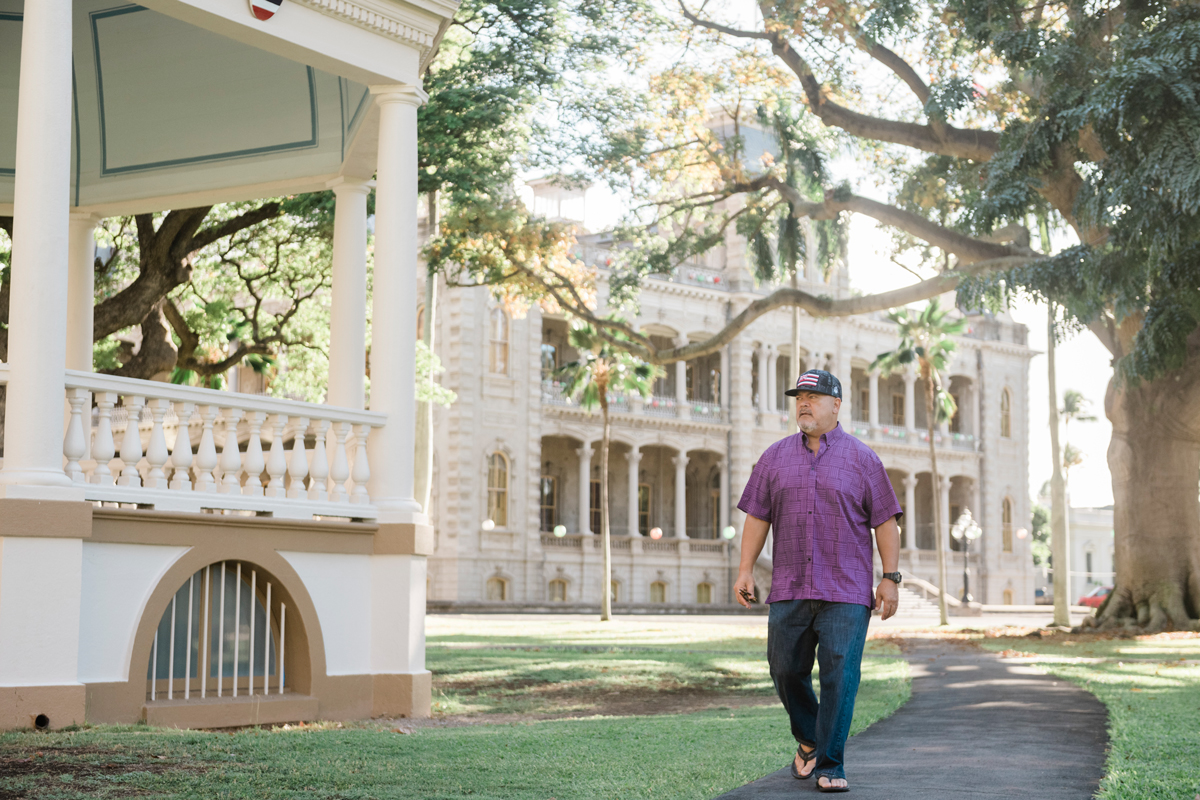
VH Which is what you did in your debut short film. E Mālama Pono, Willy Boy is told from a Hawaiian perspective. HIFF nominated your film for the best short in the “Made in Hawaiʻi” category, so obviously their selection committee thought it to be very, very good.
KA Mahalo!
VH And before HIFF, your film premiered at the ImagineNative Film and Media Arts Festival in Toronto, Canada. That’s the largest and most prestigious indigenous film festival in the world. Congrats on that, too. With so many short films being made today, it’s very competitive. One thing that makes your film stand out from the others is that it is in black and white. A bold choice. Why?
KA One of the first decisions I made was to ask my cinematographer Chapin Hall if we could shoot the film in black and white—originally asking if the film could be shot in color and changed to black and white in post. Chapin asked, “Why do you want to do that?” He said that it’s every cinematographer’s dream to shoot in black and white so he was on board once he heard my reasons, but we made the decision early on to boldly jump in and shoot in black and white from the start so there was no changing that decision. I told him I wanted to make the piece “timeless” because these Native Hawaiian land struggles have been happening for decades and keep happening and are cyclical and systemic issues. I wanted the film to feel as if it could have happened 50 years ago in Kalama Valley, at Sand Island in 1981, in Wamānalo in 1986, yesterday on the Mauna, or tomorrow, but with a twist. The black and white is one of many meiwi (Native Hawaiian aesthetic) choices that forces the viewer to focus on the story and characters on the screen rather than on the postcard images common in films or television about Hawaiʻi where Native Hawaiians are only background actors and the land is “sold” as paradise in color. This was a very Kānaka Maoli-minded choice. When Chapin heard my reasons, he said, “Okay, let’s do it!”
VH Tell me, what was your experience like making your first film after film school?
KA It was a learning experience and I couldn’t have made the film without the help of my producer Justyn Ah Chong and my cinematographer Chapin Hall, because we worked well as a trio.
VH How did your own experience inform your story? Are there any similarities?
KA There is a little bit of me in each character and co-writing with Nani helped that she understood my life experiences and growing up feeling disconnected and at other times connected to my culture. So for me, it was very important to show different perspectives of who we are as Native Hawaiians on screen.
VH In your film, the antagonist Officer Akina is also Hawaiian. Why Hawaiian?
KA Oh, man, the actor [Shawn Kahoolemana Naone] was great. He played the cop we all love to hate. This character is actually someone many Hawaiians can identify with because his issue is self-loathing. He can’t speak his own language and he’s been looked down upon by other Hawaiians. I felt that way because I didn’t grow up speaking Hawaiian and it was like being an outsider within my own culture. So this character, Akina, is very important because I’ve never seen that type of Hawaiian represented on screen in a narrative film.
VH What do you think is being masked by making this more of a personal issue between two Hawaiians? In all the other protest documentary and narrative films out there, the enemy is clearly the State, but in your film, the focus is more on a “bad Hawaiian” versus a “good Hawaiian.” Maybe your film is a little ahead of its time, because usually the colonized does not self-examine until the colonizer has been vanquished. Hawaiians are yet to have sovereignty in their own land, as you know.
KA I really like that question! I didn’t want to make it a racial issue, because that story’s been told already. And the focus is not on bad versus good, per se. Instead, I wanted the story to be about “values.” And I think it’s a much more powerful statement to make when all the characters are Kānaka Maoli and have to question their values in the story. Most of us have experienced doing something that came into conflict with our own values. That’s the reality of many Hawaiians daily — navigating conflicting values. It is self-reflective.
VH In your film, during the protest, a little girl sneaks off to an abandoned car where she lets her imagination run free from all the chaos going on in her real world. That’s one of the best and hopeful scenes in the film, a light touch in a very cruel world for a kid. Light at the end of the tunnel, perhaps? Looking ahead to the future, where is Willy Boy going, now that HIFF is over?
KA We’ve been accepted to Festival International du Film Océanien in Tahiti and applied to Maoriland Film Festival in Aotearoa and other Indigenous and non-Indigenous festivals. I know this film will have a long life and for that I am so grateful to everyone who made my dream come true, including my life and writing partner Nani, the Nichols Family Film Fund, and Pacific Islanders in Communications. Mahalo kākou!
This interview has been edited for length and clarity.

